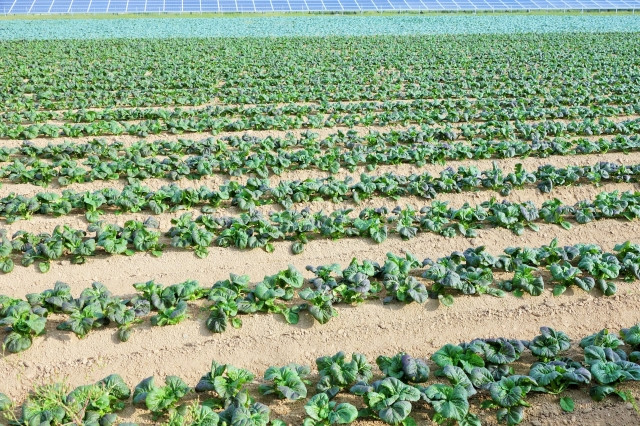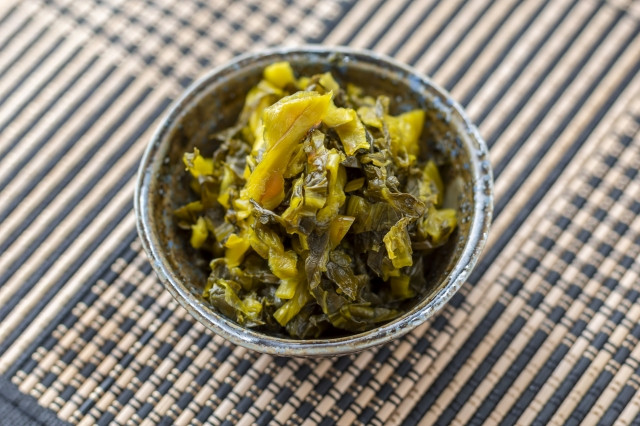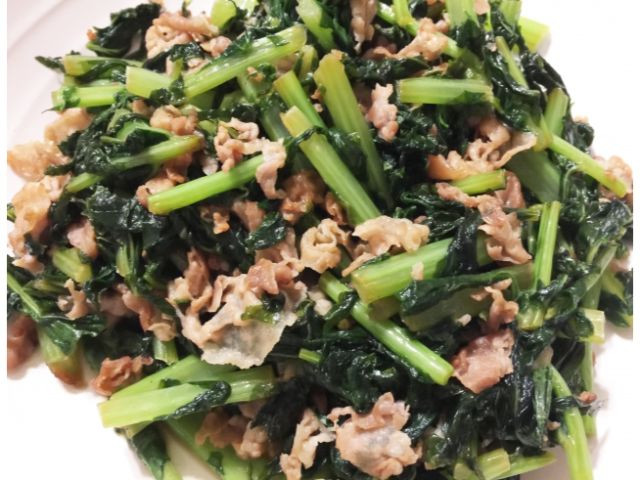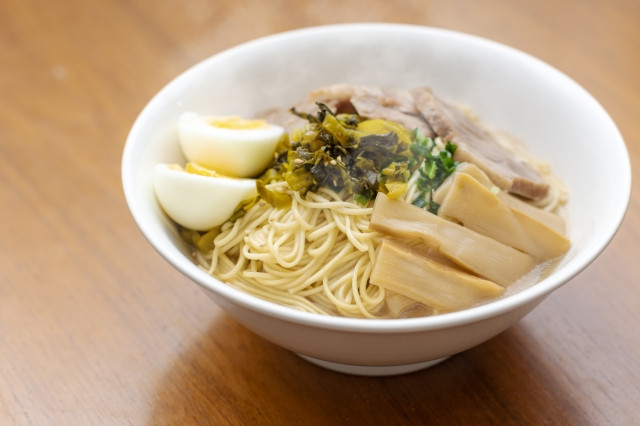Takana or Japanese mustard green is a regional vegetable in Japan. Takana from different regions carry their own distinct flavours. They are most commonly pickled in Japan. Takana can be found in markets and grocery stores. Occasionally, konbinis may also sell onigiri with takana filling. Learn more about takana below.
Table of Contents
Introduction to Takana
Takana (高菜) is said to have originated from China and was brought to Japan during the Heian Period, a time when pickles became a regular part of the Japanese commoners' meal. Takana belongs to a variety of mustard greens that grow about 20 to 60 cm. This plant is quite soft but it packs a strong punch when eaten as it is, which is why pickling it is preferred in Japan.
※ Healthline, "Mustard Greens: Nutrition Facts and Health Benefits"
Method of Cultivation

Takana is cultivated in fertile and well-drained soil during late summer or early autumn when the temperature is cool but not too cold. The plant is well-watered to keep the soil moist. Aside from that, the harvesting time and cooking methods differ for the different types of Takana.
For example,
- Yanagawa Takana can be grown up to 3 inches as baby mustard greens or up to 10 inches for full grown ones. It has a mild taste perfect for salads but is also used for pickling, soups, and stir-fried dishes.
- Kekkyu Takana has the iconic wrapped “heart” in its center. It is quite popular in Taiwan and the southern provinces in China. They are also suitable for pickling, soups and stir-fried dishes but not so much in salads.
- Unzen Takana are locally cultivated in Nagasaki and harvested during October. It has a sweet but slightly spicy taste making it quite nice even when eaten raw. We will discuss the varieties in a little more detail below.
Extent of Takana Production
Chikugo and Setaka-machi in Fukuoka Prefecture are big producers of takana in Japan. For a wide variety of pickled takana including spicy takana, Fukuoka is the best place to visit as the locals with the abundance of takana are creative with discovering various flavours.
Writer's Pick
Varieties of Takana

Each region in Japan has its own flavors and variations when it comes to cultivating and propagating Takana. Check out these unique Takana that can be found only in these regions.
Aso
Aso Takana is the symbol of the area in Kumamoto Prefecture. They can only be grown within the region due to its cold climate and volcanic ash soils which allows the takana to have thin yet crunchy stems.
※ Michinoeki Aso, “Aso Japanese Mustard Green - Takana”
Kekkyu
Kekkyu Takana is characterized by a tiny body where the base is twisted or wrapped. Best as a pickled savory or a raw component of salads as its leaves and stems are tender. This well-known Takana has a pleasing, mouthwatering mustard flavor that you won’t be able to resist.
Unzen
Unzen Takana is distinct because of its knots that formed around the base of the Takana. It is only cultivated in Unzen City of Nagasaki where a small-time farmer and store owner named Mine Masugu propagated this crop. By the 1960s, farming of Unzen Takana was given up in lieu of better earning crops but Iwasaki Masatoshi managed to revive its cultivation in 2002 and now 13 local organic farmers of Unzen continue to farm them. The Unzen Takana has a less pungent aroma and sweeter taste compared to other types in Japan which is why it is eaten raw.
※ Slow Food Foundation for Biodiversity, "Unzen Takana Leaf Vegetable"
Yanagawa
Characterized as having large leaves and small stems, Yanagawa Takana resembles a bok choy. It has a mild aroma which may go well with salads.
Methods of Preparation and Recipes
The most popular preparation methods for takana are pickling, onigiri (rice balls) and chahan (fried rice). Sounds delicious? Here are some recipes for you to try.
Pickled Takana

Takana can be easily purchased from supermarkets, morning or day markets, or online. If you are interested in pickling your own, it may take up to several days but with few ingredients. There are various pickling methods including salt, soy sauce, spicy pepper, and more. Let’s work with something simple.
- Wash a bunch of takana and let it dry for 1-2 days.
- Make saturated salt water (until salt cannot dissolve anymore).
- Add takana to the salt water and add some dried chili peppers. The liquid should reach up to half the takana. Use a heavy object to squish the takana. Let it be for a day.
- When the water level rises, dispose of the water. Repeat steps 2~4 for 2~3 days until takana is limp.
Takana Onigiri

A classic and easy to make dish with takana.
- Chop up your pickled takana then mix it with hot rice.
- Wet your hands and get ready to make triangular shapes with the rice.
- Wrap up each onigiri with seaweed or an uncut pickled takana leaf and serve!
Takana Chahan or Fried Rice

Fried rice is a great way to bring out takana’s flavours. Just make ordinary egg fried rice and spam some chopped pickled takana!
Stir-fry Pork with Takana

Stir-fried pork with Takana is a hearty dish that will surely fill not only your tastebuds and stomach, but your heart as well. Here's what you have to do:
- Slice your pork into bite-size pieces then marinate with soy sauce, oyster sauce, minced ginger, cornflour, and sesame oil. Set aside for 30 minutes.
- Prepare and slice your bunashimeji mushrooms, garlic, and chili peppers if you want to add more spice.
- Heat oil in your pan then sautee your garlic until a bit cooked. Add your marinated pork and stir-fry until almost cooked, you don't want them to become too hard to chew.
- Add your remaining ingredients along with the Takana then season to your liking.
- Turn off the heat and serve immediately.
Takana Ramen

Ramen isn't as easy to cook as it is to eat. However, thanks to Japanese innovations, you can cook and eat ramen instantly. Here's what you have to do:
- Pick your favorite Instant Ramen and cook it according to its package instructions.
- While waiting for your ramen to boil, chop up some Takana leaves and other toppings of your choice like ham, mushrooms, carrots, etc.
- Prepare your instant ramen and top with Takana as well as your chosen toppings. Serve and enjoy!
Where to buy?
Not sure where to get takana? We’ve got you covered. Just in case you’re wondering as well, the Kanji for takana is 高菜. When in doubt, you can just show it to shop attendants.
Supermarket
Lots of supermarkets in Japan advertise Takana as both a condiment and a seasoning. It’s also marketed in open-air establishments across Japan. The prefecture of Fukuoka, the renowned maker of high quality pickled mustard, holds a number of establishments that will satisfy your cravings of this awesome relish.
One example is Hakata’s Kitchen, now called Tanaka Vegetable Shop inside the Yanagibashi Reno.
Online Shops
There are a number of shops available online, such as the Japan Centre where you could purchase a hundred gram jar of pickled mustard leaves for a price of less than 2 dollars or the Ichiba Junction where they feature Takana-zuke with a spicy kick of chili peppers for 4.70 dollars per kilo. When you don’t feel like being sandwiched in a crowd of customers, you can always check Japan Centre's website and Ichiba Junction's website.
Morning Markets
Similar to supermarkets, there are also morning markets that sell quality foods like pickled Takana. You can check out Kyoto’s Nishiki
Market if you're interested in quality-made Takana.
Summary

Just when you think you know all there is to know about Japanese cuisine, something like Takana just pops up on your plate.Today, we learned all about Japan's own mustard greens called Takana which is used for numerous Japanese dishes. It has quite the unique taste that adds a great flavour to your meals.



































